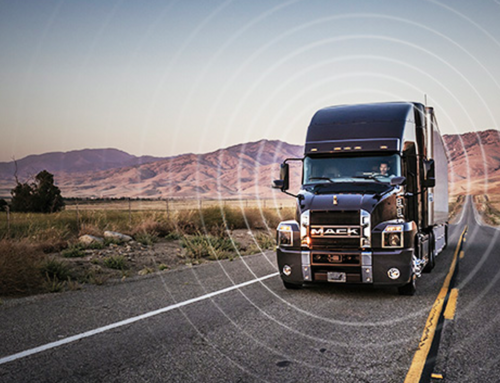Platform Cloud Migration for Concrete and Steel Manufacturers
Infrastructure in the United States is a colossal industry. The bridges, roadways, and other public works that support our expanding population require investments in excess of two trillion dollars per year. Moreover, most analysts expect that figure only to climb.
Much of our infrastructure is built via pre-cast concrete, components poured and shaped in a plant, then shipped to be assembled on-site. Quality is critical, and most suppliers within the vertical have adopted rigorous processes to attempt to document specific pieces as they are completed. For decades, this process has been manual, creating reams of paperwork that are difficult to create, maintain, and, if needed, access.
In a vertical composed of multimillion-dollar components that are often impossible to accurately inventory, firms like Idencia are disrupting this analog industry with robust digital capabilities. Idencia tags, tracks, and inventories concrete and steel structures via RFID chips. Such integrations allow for better inventory management and streamlined maintenance and service requests of these mission-critical components.
Yet, the tracking of an asset is merely one end of the problem. The information must be sent to a database, and that database must be reliable and secure. Moreover, devices that transmit the information from the asset to the database must be ubiquitous and flexible.
Idencia was one of the first companies to bring RFID tracking to infrastructure, and the first iteration of the platform was slightly ahead of its time. Early versions required proprietary scanners that sent the data to locally hosted on-premise databases.
For Idencia, this offered immediate support challenges to customers scattered worldwide. The Windows desktop and mobile app made it impossible for the data to be shared in a meaningful manner with partners. Updates needed to be distributed to the field, and hours were spent on remote support and troubleshooting. Moreover, when the app locked up, each of the scanners had to be rebooted. Idencia envisioned a future where inventory data could be co-mingled with an ever-increasing variety of sensors that track moisture and vibration. If their platform could pivot and undergo cloud migration, Idencia stood to be a pioneer in bringing the Internet of Things (IoT) to infrastructure.
Idencia enlisted the expertise of Ascendle to perform cloud migration for their platform in a way that allowed for rapid releases, better service, and more common standards.
Figuring Out What Matters
Like many software platforms hosted on-premise, Idencia had found themselves supporting as many different versions of code as they had customers. As each client came up with specific use cases, their version of the software was customized, compounding support challenges.
As such, Ascendle worked with stakeholders to prioritize the features to be included during the cloud migration of the minimum viable product (MVP) version of the platform.
Tasked with these challenges, Ascendle outlined a strategy that included three key concepts:
- Re-architecting and rebuilding the back-end system to be hosted on the cloud, eliminating on-premise deployments and the associated headaches, and permitting a software as a service (SaaS)-based sales model.
- Designing the new product to be configurable by the client, eliminating the many different custom versions of the application that had been created over the years to accommodate customer-specific needs.
- Utilizing next-generation industrial RFID readers that run on Android instead of Windows Mobile, allowing the use of contemporary software development tools. This would extend Idencia’s functionality to a wide variety of handheld RFID and barcode scanners.
Completing the MVP 2 Months Ahead of Schedule
When faced with crafting a standard instance of software that has been customized so dramatically, a key first challenge is to “ruthlessly prioritize,” focusing on the most important features first. In the case of Idencia, this need had become even more pressing five months into the new software engineering effort.
Ascendle projected that there were about four months left to complete all of the features earmarked for the initial MVP release. Working with our product owner to prioritize the most impactful features to include, Idencia stakeholders agreed to move less-critical features to version 1.1, allowing the initial version to be completed two months earlier than projected. After the product was released, Ascendle continued to move it forward based on customer feedback. Today, all of the earlier headaches of on-premise deployments and old mobile operating systems are a thing of the past.
In addition to the functionality of the product, special attention was paid to the user experience. Field personnel need Idencia to perform flawlessly outside, in low or high light areas, regardless of the weather. As such, the interface was designed to accommodate a different type of user operating in harsh conditions.
To further support Idencia’s cloud migration, e-commerce tools Shopify and Recurly were used to allow for easy purchasing of additional RFID tags on a subscription basis. On the back end, maintenance personnel now had access to a wide variety of reports powered by SQL Server Reporting Services (SSRS).
A True Cloud Migration Solution
When completed, Idencia’s platform, which had previously been on-premise, was now securely stored in the cloud on Microsoft Azure servers. Management of data was now possible via any desktop computer or mobile device.
Because of the new approach, data scanned from an RFID tag was available to all users on the platform and on the device of their choice. Because infrastructure projects can and do occur in areas without reliable wifi or cellular coverage, tags can be scanned by users without live Internet connections. Once service is restored, the app automatically synchronizes, reliably passing information directly to the cloud.
Today, Idencia’s Industrial Internet of Things (IIoT) platform provides maximum value to all stakeholders. For the construction manager, the system enables visibility of the entire supply chain. As important, the owner of the bridge or building now has the means to track and document the maintenance and service history of each component of these valuable projects.



